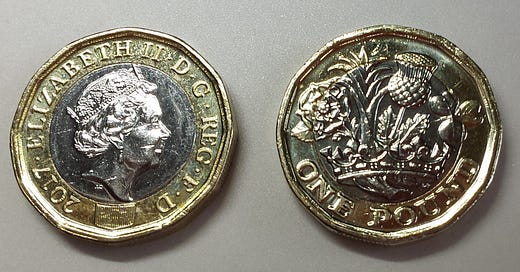This article continues our project explaining each line of Sun Tzu’s work. The English and Chinese are from my award-winning translation, The Art of War and The Ancient Chinese Revealed. Start here for the book’s opening lines.
The lines discussed in this article continue the Fourth Section of Chapter 5. This chapter explains how strategic Momentum is created by the interruption of direct actions with surprise. The Fourth Section focuses on the unpredictability of competition resulting from surprise turnarounds. These middle lines discuss the series of psychological reactions resulting from surprise that turn bad situations into good ones.
Direct action and unexpected actions, surprises, are the two sides of the coin of momentum. Direct actions tackle competition in a straightforward way. Their results are expected because we know how these actions work. Unexpected actions are those whose purpose and results are unknown. These moves themselves are largely hidden until they are revealed. Often, our only control of a losing situations is our ability to flip from direct actions to an unexpected one at the time of our choosing.
The Fog of War
The first of these lines echo a message similar to the lines of this Section discussed in the previous article. They describe the “fog of war.” Not only the outcome of a competitive comparison is uncertain, but, because of surprises, what is actually happening during many competitions is uncertain.
<Muddy> <muddy> <murky> <murky>
War is very sloppy and messy.
All competitive arenas involve uncertainty. Different players make different moves. Even when these moves are straightforward, the complex interactions among them are unknowable. We all have our own positions, but in competition those positions become slippery with change. Nothing is predictable in a deterministic way.
This becomes more apparent as situations become more competitive. Real competition can never work as neatly as in game theory because all the possible positions and moves are never known. New positions are created and new moves can be continually invented as we play. These are all surprises. As our world grows more competitive, there are more and more of them.
Turnarounds
<Form> <round>
Positions turn around.
<Form> is the Chinese character translated into English as “position.” Our strategic positions give us a shape and place in the minds of others.
Positions have strengths and weaknesses. Just as chaos and order are complementary opposites, every strength of a position is also potentially a weakness, and every weakness is potentially a strength. Our surprises are a kind of judo, shifting the balance between the two, making what was once weak strong and the currently strong weak. Larger competitors have the force of more resources, but smaller competitors are more nimble and can change directions more easily.
When we use surprise, we control the turning around of positions. We all use surprises more frequently when we are small and just beginning. Our positions are not yet firmly fixed in the minds of others.
<And> <yet> <no> <may> <defeat> <also>
Nevertheless, you must never be defeated.
The primary purpose of surprise is often to avoid immediate defeat. The smaller competitor will lose to the larger if there is a showdown, a “battle,” based on common comparisons of size, strength, and resources. In examining our positions, we must admit our comparative weaknesses in order to avoid such showdowns. If they occur, we must use surprise to escape from them. These surprises redefine our positions in the eyes of others, erecting a better—for us—standard for comparison. For example, instead of a comparison of current resources, we may want a comparison of our speed in exploring new areas. By “proving” the value of our superiority in that area, we turn our surprise into momentum.
The Psychology of Surprise
The strength of surprise is that it generates emotions. If we want to win the support of others, we must change the way they feel about us. Sun Tzu tackles this shift in emotions in the next lines of this Section. They explain in more detail how we convert the momentary emotions of competitive surprise into longer-term success.
The rest of this article is reserved for our paid subscribers. Become a free subscriber for weekly previews and one monthly article. To get full weekly articles become a paid subscriber.
Keep reading with a 7-day free trial
Subscribe to Practical Strategy Based on Sun Tzu's Art of War to keep reading this post and get 7 days of free access to the full post archives.





